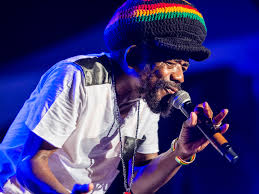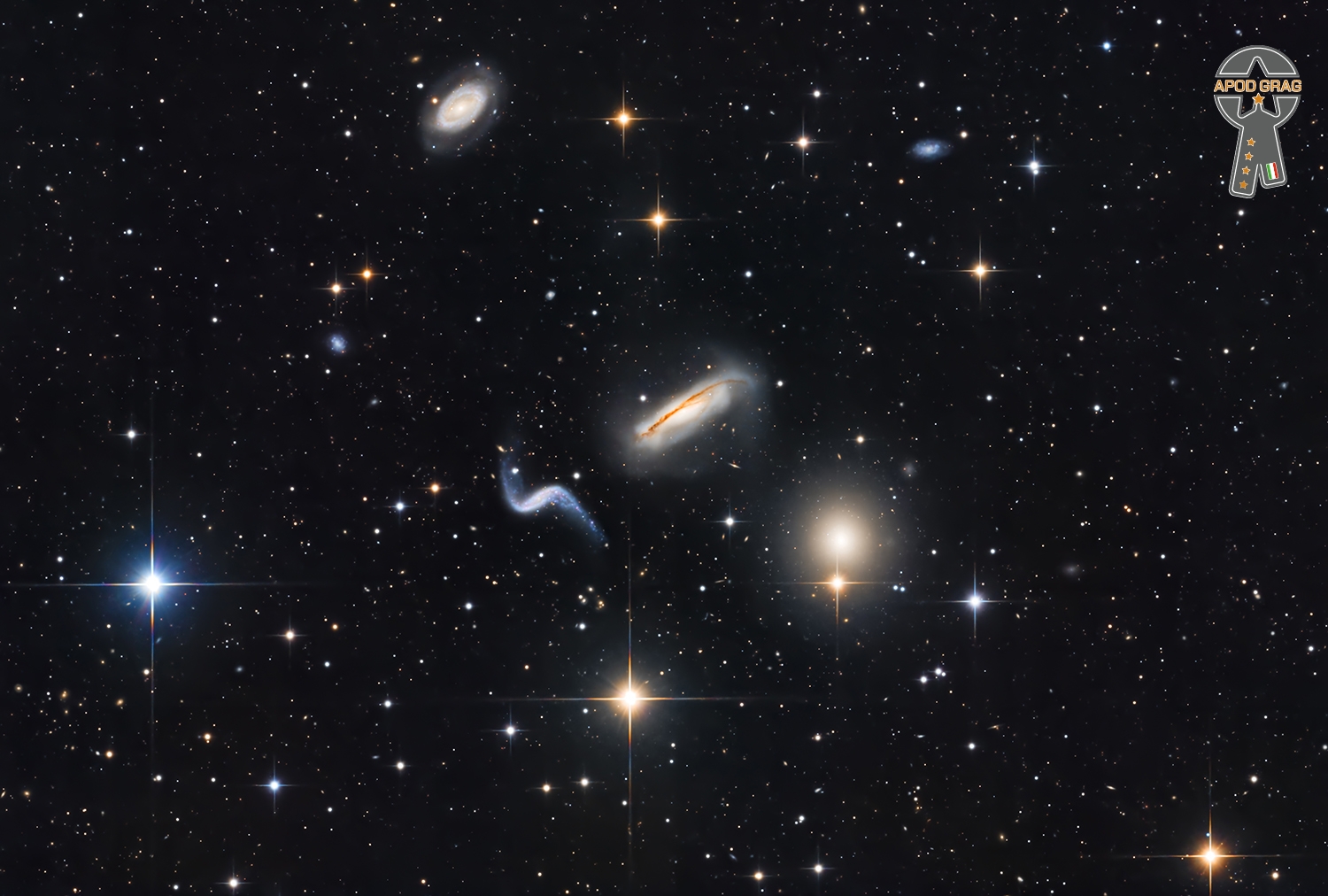Blog
Iverson Minter (March 23, 1932 – February 25, 2012), known professionally as Louisiana Red, was an American blues guitarist, harmonica player, and singer, who recorded more than 50 albums. A master of slide guitar, he played both traditional acoustic and urban electric styles, with lyrics both honest and often remarkably personal. His career includes collaborations with artists as Muddy Waters, John Lee Hooker, Eric Burdon, and others.
more...Granville Henry “Stick” McGhee (March 23, 1918 – August 15, 1961) was an American jump blues guitarist, singer and songwriter, best known for his blues song “Drinkin’ Wine, Spo-Dee-O-Dee“, which he wrote with J. Mayo Williams.
In the military, McGhee often played his guitar. One of the songs he performed was “Drinkin’ Wine, Spo-Dee-O-Dee”, one of the earliest prototypical rock-and-roll songs. Cover versions were recorded by Wynonie Harris, Lionel Hampton, Big John Greer, Johnny Burnette, Jerry Lee Lewis, and Mike Bloomfield‘s Electric Flag (as “Wine”). The song lent its name to the alcoholic fruit drink spodi. In 1946 Granville and Brownie McGhee wrote a version of the song that didn’t use profanity. Harlem Records released the new version in January 1947. It sold for 49 cents. It did not get much airplay until two years later, when Stick re-created the song for Atlantic Records.[1] It was on the Billboard R&B chart for almost half a year, rising to number 2, where it stayed for four weeks.
Numerous cover versions of his songs were recorded over the years. The first cover was by Lionel Hampton, featuring Sonny Parker; next was a cover by Wynonie Harris, followed by a hillbilly-bop version by Loy Gordon & His Pleasant Valley Boys. “Drinkin’ Wine, Spo-Dee-O-Dee” continued to be popular throughout the 1950s in cover versions by various artists, including Malcolm Yelvington in 1954, Johnny Burnette in 1957, and Jerry Lee Lewis in 1959.
more...Coco Tea Memorial
Sad news: another reggae icon has flown to Zion. The reggae community mourns the loss of sweet sweet Cocoa Tea. The veteran singer passed away at a hospital in Broward, Ft Lauderdale, Florida, following a cardiac arrest. Cocoa Tea, known for his sweet, melodic voice, as well as his powerful chanting, was 65-years-old. Rest in power, legend. Your music will live on forever! Our sincere condolences to his family and friends.
https://www.reggae-vibes.com/articles/2025/03/sweet-sweet-cocoa-tea-has-died

Hickson 44 (HCG 44) is a group of galaxies in the constellation Leo. As Arp 316, a part of this group is also designated as group of galaxies in the Atlas of Peculiar Galaxies. NGC 3185/87/90/93.

Andrew Lloyd Webber, Baron Lloyd-Webber (born 22 March 1948) is an English composer and impresario of musical theatre. Several of his musicals have run for more than a decade both in the West End and on Broadway. He has composed 21 musicals, a song cycle, a set of variations, two film scores, and a Latin Requiem Mass.
Several of Lloyd Webber’s songs have been widely recorded and widely successful outside their parent musicals, such as “Memory” from Cats, “The Music of the Night” and “All I Ask of You” from The Phantom of the Opera, “I Don’t Know How to Love Him” from Jesus Christ Superstar, “Don’t Cry for Me Argentina” from Evita, and “Any Dream Will Do” from Joseph and the Amazing Technicolor Dreamcoat. In 2001, The New York Times referred to him as “the most commercially successful composer in history”. The Daily Telegraph named him in 2008 the fifth-most powerful person in British culture, on which occasion lyricist Don Black said that “Andrew more or less single-handedly reinvented the musical.”
Lloyd Webber has received numerous awards, including a knighthood in 1992, followed by a peerage for services to the arts, six Tonys, seven Olivier Awards, three Grammys(as well as the Grammy Legend Award), an Academy Award, 14 Ivor Novello Awards, a Golden Globe, a Brit Award, the 2006 Kennedy Center Honors, and two Classic Brit Awards (for Outstanding Contribution to Music in 2008, and for Musical Theatre and Education in 2018). In 2018, after Jesus Christ Superstar Live in Concert won the Primetime Emmy Award for Outstanding Variety Special (Live), he became the thirteenth person to win an Oscar, an Emmy, a Grammy, and a Tony. He has a star on the Hollywood Walk of Fame, is an inductee into the Songwriters Hall of Fame, and is a fellow of the British Academy of Songwriters, Composers, and Authors.
The Really Useful Group, Lloyd Webber’s company, is one of the largest theatre operators in London. Producers in several parts of the UK have staged productions, including national tours, of Lloyd Webber musicals under licence from the Really Useful Group. He is also the president of the Arts Educational Schools, London, a performing arts school located in Chiswick, west London. Lloyd Webber is involved in a number of charitable activities, including the Elton John AIDS Foundation, Nordoff Robbins, Prostate Cancer UK and War Child. In 1992, he started the Andrew Lloyd Webber Foundation which supports the arts, culture, and heritage of the UK.
more...Leo “Bud” Welch (March 22, 1932 – December 19, 2017 Bruce, MS) was an American gospel blues musician and guitarist. He started his music career in 2014, with the release of the album Sabougla Voices by Big Legal Mess Records. His subsequent studio album, I Don’t Prefer No Blues, also recorded for Big Legal Mess, was released in 2015.
more...
Stephen Joshua Sondheim (March 22, 1930 – November 26, 2021) was an American composer and lyricist. Regarded as one of the most important figures in 20th-century musical theater, he is credited with reinventing the American musical.With his frequent collaborators Harold Prince and James Lapine, Sondheim’s Broadwaymusicals tackled unexpected themes that ranged beyond the genre’s traditional subjects, while addressing darker elements of the human experience. His music and lyrics are tinged with complexity, sophistication, and ambivalence about various aspects of life.
Sondheim’s interest in musical theater began at a young age, and he was mentored by Oscar Hammerstein II. He began his career by writing the lyrics for West Side Story(1957) and Gypsy (1959). He transitioned to writing both music and lyrics for the theater, with his best-known works including A Funny Thing Happened on the Way to the Forum (1962), Company (1970), Follies (1971), A Little Night Music (1973), Sweeney Todd: The Demon Barber of Fleet Street (1979), Merrily We Roll Along (1981), Sunday in the Park with George (1984), and Into the Woods (1987).
Sondheim’s numerous awards and nominations include eight Tony Awards, an Academy Award, eight Grammy Awards, an Olivier Award, and the Pulitzer Prize. He also was awarded the Kennedy Center Honor in 1993 and a Presidential Medal of Freedom in 2015. A theater is named after him both on Broadway and in the West End of London. Film adaptations of his works include West Side Story (1961), Gypsy(1962), A Funny Thing Happened on the Way to the Forum (1966), A Little Night Music(1977), Sweeney Todd: The Demon Barber of Fleet Street (2007), Into the Woods(2014), and West Side Story (2021).
more...Fred Anderson (March 22, 1929 – June 24, 2010) was an American jazz tenor saxophonist who was based in Chicago, Illinois. Anderson’s playing was rooted in the swing music and hard bop idioms, but he also incorporated innovations from free jazz.[4] Anderson was also noted for having mentored numerous young musicians.Critic Ben Ratliff called him “a father figure of experimental jazz in Chicago”. Writer John Corbett referred to him as “scene caretaker, underground booster, indefatigable cultural worker, quiet force for good.” In 2001, author John Litweiler called Anderson “the finest tenor saxophonist in free jazz/underground jazz/outside jazz today.”
more...eorge Washington Benson (born March 22, 1943 Pittsburg) is an American jazz fusionguitarist, singer, and songwriter. He began his professional career at the age of 19 as a jazz guitarist.
A former child prodigy, Benson first came to prominence in the 1960s, playing soul jazzwith Jack McDuff and others. He then launched a successful solo career, alternating between jazz, pop, R&B singing, and scat singing. His album Breezin’ was certified triple-platinum, hitting No. 1 on the Billboard album chart in 1976. His concerts were well attended through the 1980s, and he still has a large following. Benson has won ten Grammy Awards and has been honored with a star on the Hollywood Walk of Fame.
more...Aurelio Martínez Suazo, the Honduran musician who championed his country’s Garifuna people (also known as the Garínagu) and brought the music to wider international attention, has died. Martínez was one of 13 people killed last night (Monday, March 17) in a small plane crash off the coast of the Caribbean island of Roatán, according to The Associated Press. He was 55 years old.
Born in the isolated town of Plaplaya, in Honduras’ Gracias a Dios district, in 1969, Martínez participated in traditional Garifuna rituals from a young age. Typically performed on acoustic guitar with percussive accompaniment, Garifuna songs combine West African rhythms with Latin, reggae, and calypso music. At the age of 14, Martínez moved to the port city La Ceiba, where he began performing in various latin jazz ensembles. Eventually, he formed his first group, Lita Ariran, whose 1995 album, Songs of the Garifuna, made them one of the first Garifuna bands distributed on an international label.
Two years later, Martínez met Andy Palacio, a fellow rising star in Garifuna music from Belize, when the two recorded the duet “Lánarime Lamiselu” for Stonetree Records’ compilation Paranda: Africa in Central America. He put out his debut solo album, Garifuna Soul, in 2004, and, in 2005, was elected as the first member of African descent in the National Congress of Honduras, where he fought for the rights of the Garifuna community. Following Palacio’s death, in 2008, however, Martínez returned to music, and would go on to release three more studio LPs under the moniker Aurelio: Laru Beya, in 2011, Lándini, in 2014, and Darandi, in 2017. Last year, Lándini was named as one of the best Latin American albums of all time in the Los 600 discos de Latinoamérica, a list project compiled by music journalists from the region.
Aurelio Martínez Suazo (26 September 1969 – 17 March 2025), professionally known as Aurelio, was a Honduran singer-songwriter and politician. Known for his Garifuna music, he was considered a cultural ambassador of the Garifuna people. According to The Guardian, he became the leading Garifuna performer after the death of musician Andy Palacio. His acclaimed album “Laru Beya” was considered among the best albums of Latin American music, according to Los 600 de Latinoamérica, a 2024 ranking made by Latin American music critics.
more...More Posts
- The Cosmos with Sh2-155
- Michael Shrieve Day
- Louis Bellson Day
- World Music with David Cerreduela
- Daily Roots with Amy Winehouse
- BEAU KOO JACKS 7-5-18
- The Cosmos with NGC 1032
- Robbie Robertson Day
- Smiley Lewis Day
- World Music with Aladár Csiszár
- Daily Roots with Winston McAnuff
- Happy 4th of July 2018
- The Cosmos with NGC 6946
- Bill Withers Day
- Fred Wesley Day
- World Music with Stony Point
- Daily Roots with the Revolutionaries
- The Cosmos with UGC 5340
- Dr Lonnie Smith Day
- Johnny Coles Day






